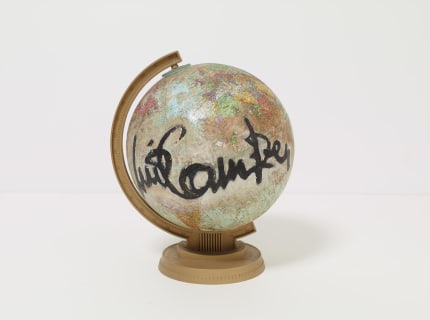Luis Camnitzer and Valeska Soares are included in a group exhibition, RAYUELA / El Orden Falso. Comisariada por Octavio Zaya at Galeria Marlborough Madrid, Spain.
Galeria Marlborough Madrid's press release follows:
Rayuela / El Orden Falso brings together 15 Latin American visual artists who approach or are inspired by the complex universe of Julio Cortázar’s iconic novel to commemorate the 60th anniversary of its publication.
This year marks the sixtieth anniversary of the publication of Rayuela, the work that was the beginning of the so-called boom of Latin American literature and is considered one of the 100 most outstanding novels of twentieth-century literature. An unusual onomastic indeed, but one that is undoubtedly linked to one of the legendary declarations of one of the characters in this masterpiece: «Only by living absurdly it is possible to break out of this infinite absurdity». Absurdity, then, in the face of absurdity.
Rayuela is not a generic novel, but neither is it an anti-novel, as some critics have described it. Cortázar’s intention was to «make a novel that would break all the structures of the traditional novel», in the manner of a counter-novel; asort of literary game that we could relate to Laurence Sterne’s Tristram Shandy, to James Joyce or to different works by Claude Simon, Nathalie Sarraute or Alain Robbe-Grillet.
In this case, the break is multiple. First of all, Cortázar divides the 155 chapters that make up the novel into three parts: Del lado de allá, Del lado de acá and De otros lados (expendable chapters). In addition, the author suggests that the book should be read in two possible ways: progressively from chapter 1 to 56 or «jumping» (hopscotch style) through the 155 chapters following the «table of instructions» provided by the author, back and forth (forwards and backwards) between chapters 58 and 131 infinitely. There is also the option for the reader to choose their own path through the narrative. The remaining chapters (which explain and clarify important situations and information about the characters) may be expendable. It is therefore an exploration with multiple endings, an incessant search through unanswered questions, although, undoubtedly, the most obvious is not the break of the linearity of the narrative but the fact that the reader becomes the main actor in the creation of this interactive universe.
The exhibition organized by the Marlborough Gallery, curated by Octavio Zaya, is both a tribute to the sixtieth anniversary of Rayuela and an opportunity to examine and analyze how a group of 15 visual artists imagine their work, approach or are inspired by the complex universe of a now classic work of Spanish literature.
The invitation to participate in the exhibition had no other requirements or conditions other than an understanding of the Spanish language and the reading of the original version of Cortázar’s work. The selection focused on Latin American artists (regardless of their place of residence), recognized or represented by international institutions or galleries: Alexander Apóstol, Fernando Bryce, Luis Camnitzer, Tania Candiani, Leda Catunda, Marilá Dardotand Fabio Morais, Guillermo Kuitca, Rafael Ortega, Amalia Pica, Sandra Ramos, Valeska Soares, Rivane Neuenschwander, Mariana Lacerda and Antonio Vega Macotela.
As in the case of Cortázar’s counter-novel, the artists have addressed different themes and relationships, situations, and styles, such as love, the absurdity of existence, literature, language, politics, autobiography, inner monologue,discontinuity, displacement, play or the days of the year. Most of them have created works specifically for the exhibition. And, as in the case of Rayuela, there is no essential core, no essence as an intrinsic or indispensable quality that characterizes the exhibition, nor an example that preserves the fundamental characteristics of the show. As Cortázar would say, «we went around without looking for each other, but knowing we went around to find each other». What stands out is the fusion of its forms (or their forms) with the diversity and contradictions of the world, presented as change, as a game anda puzzle. La Maga, one of the main characters in Rayuela, used to say that «false order... disguises chaos».


